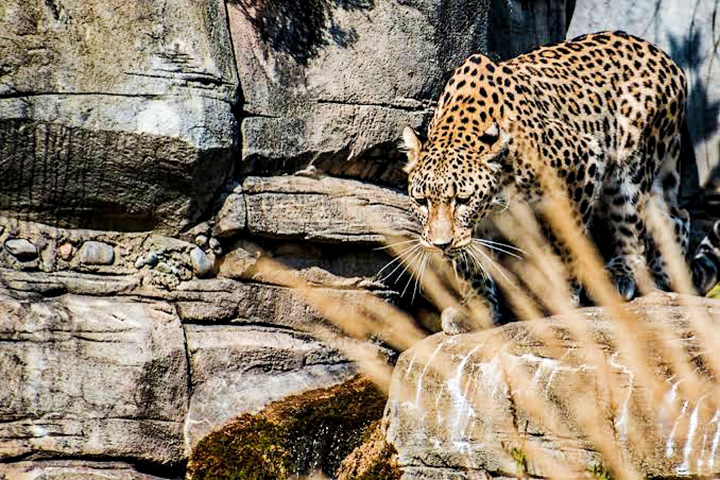Animals like leopards and elephants are not killed just in self-defence by communities living near forests – often, it is revenge for a killing that has already occurred
In 2018, Thane police arrested a man from Chowk village in Raigad, for killing a leopard because this wild cat killed his livestock. A tigress was also killed in Rajaji Tiger Reserves for the same reason.
Recently we heard about the painful death of a pregnant elephant in Kerala. As per Environment Ministry data, 655 elephants were killed between 2009-10 and 2016-17, of these, 390 deaths occurred due to electrocution. Deaths of pachyderms by electrocution on many occasions are intentional — revenge against harming crops.
This year till June, five leopards were lynched in Assam alone. Every year, nearly 200 leopards are killed, of which 60 are killed in Uttarakhand and Himachal Pradesh every year.
However, there is not much government data on animals killed in man- animal conflicts.
These killings suggest that a new phenomenon is occurring — “revenge killing” — killing animals for revenge. And it’s becoming more frequent day by day.
Chief Wildlife Warden Shyamal Tikadar recently said in a webinar that the conservation of animals depends on “tolerance of indigenous communities”. When wild cats develop a taste for “livestock” and “human flesh” — or herbivores frequently invade crops — this tolerance starts fading away.
In Gujarat, there is a peaceful relationship between lion and human. No cases of “revenge killing” have been reported in mainstream media. Maldharis, a pastoral tribe that historically lives peacefully along with lions, are some of the main reasons cited for this. But since the number of lions is rising outside the protected area of the park — near human habitats — revenge killings can pose a big danger against the conservation efforts.
When an animal attacks cattle, livestock –the no-availability of better and hassle-free ex gratia(compensation) for the death of livestock makes villagers avenge the killing of the cattle. More than that, fear about survival, and killing of relatives in conflict with animals also results in killings of animals.
Although, revenge killings are not animal-specific phenomenon, in the case of carnivorous animals things are becoming more worrying. One animal that stands out in this regard is the leopard.
Leopards in India are notorious for major man- animal conflicts and scientists fear that hostility towards leopards may make people hostile to every other carnivore including tigers and lions. They feel there is increasing social sanction for revenge killing.
Government officials often allow killing of “man- eating” leopards and tigers, just to placate villagers living around the area as any delay may result in revenge killing of the wild cat at the hands of villagers.

However, in the case of leopards, things are becoming a bit grimmer because at some places they are turning “man-eaters” and almost everywhere they attack livestock, enter villages. They stalk their prey frequently outside the protected area near human habitations and attack them once they get a chance.
A recent study says that leopards have adapted well to the landscapes modified by humans. They attack livestock in heterogeneous landscapes –very dense forests, moderate dense forests, open forests, scrubland and non-forests.
As per the 2015 census, the population of India’s leopard, Panthera pardus fusca,
is roughly between 12,000 and 14,000 individuals. Almost every state has some population of leopards within its territory.
Leopards are listed in Schedule I of the Indian Wildlife (Protection) Act, 1972, and as “vulnerable” on the IUCN Red List.
Latika Nath, wildlife biologist, says that generally leopards attack humans in retaliation, “when people attack them out of fear”, while they generally live peacefully in human habitats.
The killing of “man-eating” animals has also been a controversial thing, as on some occasions the autopsies done reveal that the killed animal was not actually a man -eater.
However, there is no denying that leopards, at many places, do attack humans. Therefore, they have topped this list.
In the words of British naturalist, hunter Jim Corbett, leopards are “the best-hated and most-feared animal in all India”. Since the 1918 pandemic, leopards have frequently come in conflict with humans.
Recently, the efficacy of policies to mitigate conflict and translocate leopards from conflict zones has come in question due to rising number of these conflicts and subsequent revenge killings. This has prompted the need for broad policy guidelines and management options to deal with situations arising out of increasing man -leopard conflict and their killings.
As forests are disappearing, leopards have learnt to seek prey in human habitats and end up making humans hostile to them. The hostility towards the wild cat is increasing — pointing towards a potential danger. This hostility sustains and people become intolerant towards animals. “Revenge killings” may become more frequent posing huge danger for conservation efforts.
Indian communities have always been praised for their tolerance and co- habitating with animals. Their record in animal conservation is palpable — India is home for the largest tigers (nearly 3,000), Asiatic lions and many other endemic species.
Man-animal conflicts and revenge killings are a new and dangerous trend which require immediate attention.
(Cover: Leopard is the most notorious animal when it comes to man – animal conflicts // Credit: John Banovich/Wikicommons)





